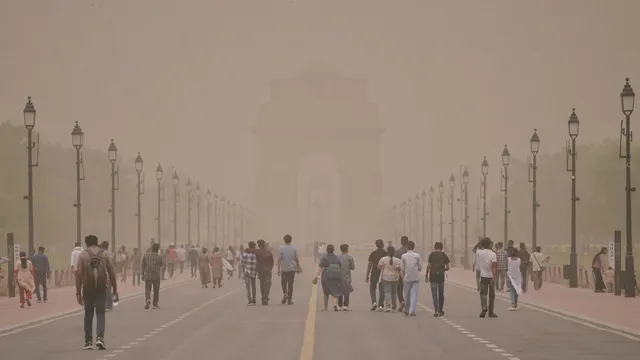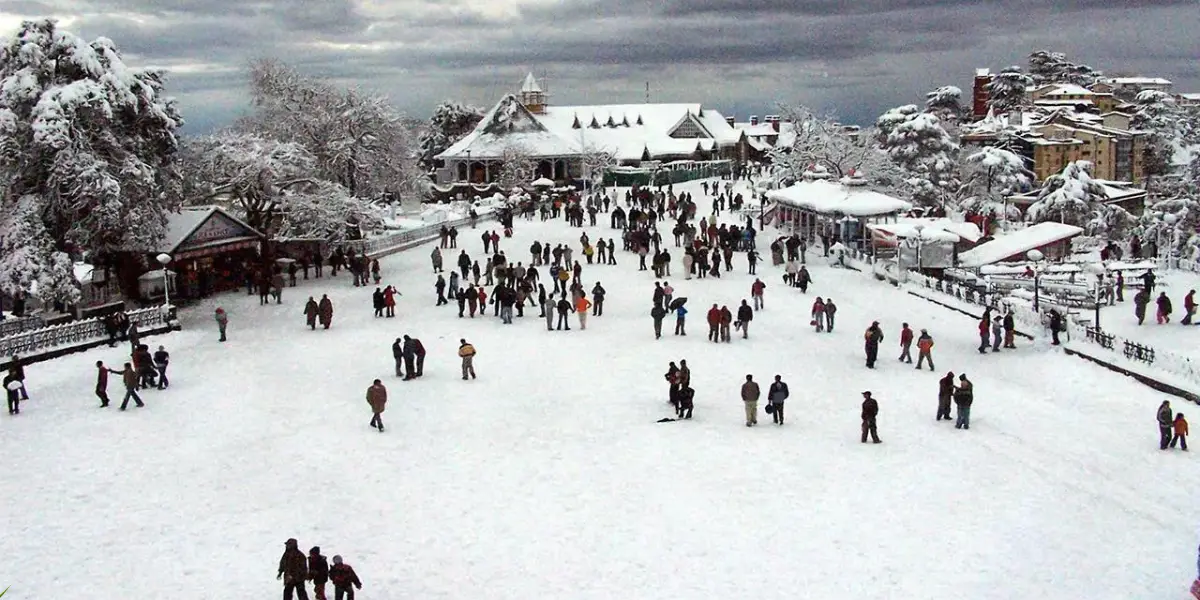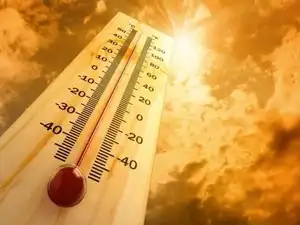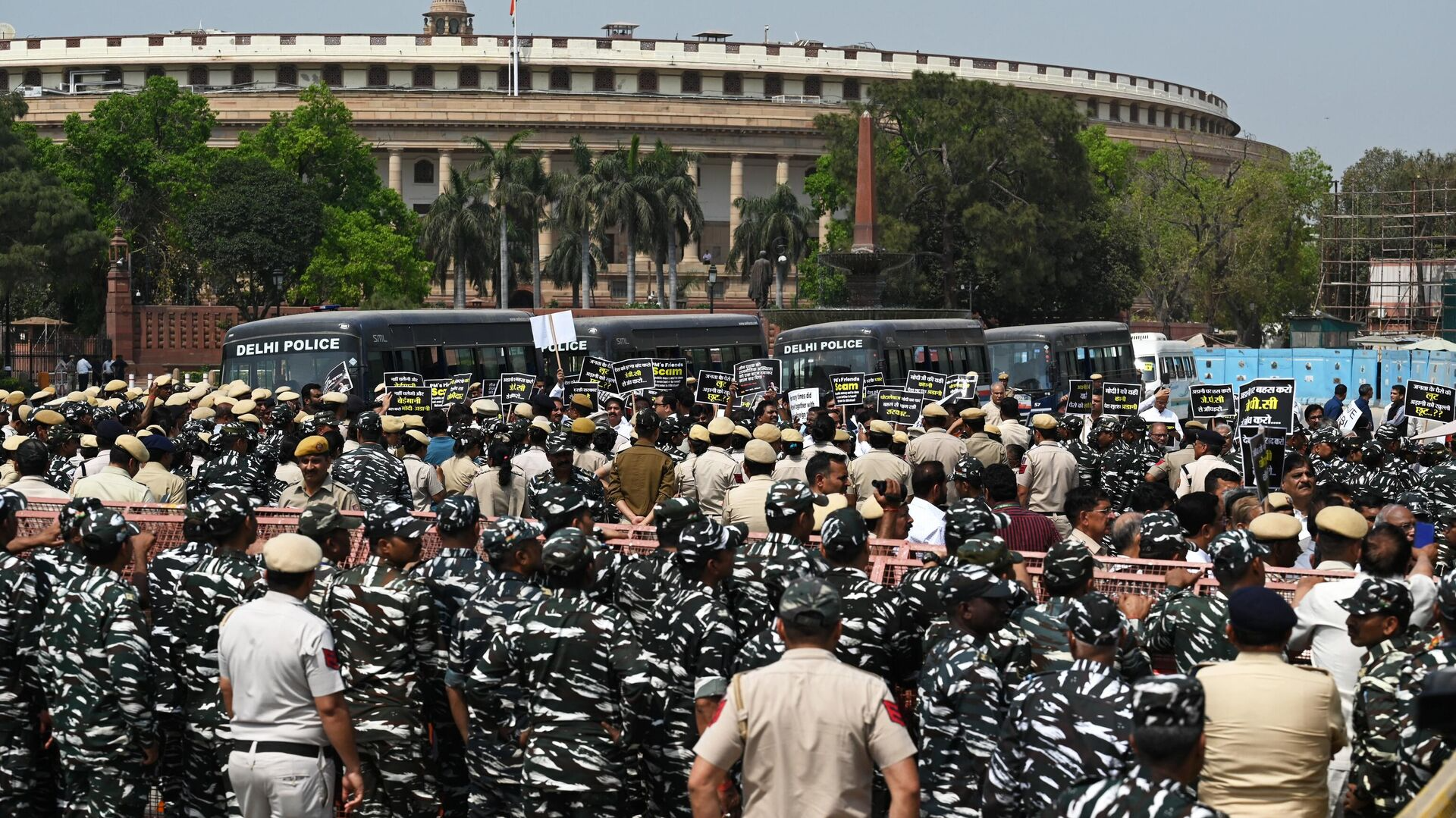Delhi Air Quality Dips Post Dust Storm
Posted On July 11, 2025

Delhi Air Quality Dips Post Dust Storm- A Breathless Challenge in the Monsoon's Wake
As the Indian capital was poised to fully embrace the rejuvenating embrace of the Southwest Monsoon, a sudden and dramatic shift in atmospheric conditions has plunged Delhi's air quality into the 'poor' to 'very poor' categories. A powerful dust storm, sweeping across vast stretches of arid land, particularly from western Rajasthan, has inundated the city with particulate matter, transforming the sky into a hazy shroud and raising significant health concerns for its millions of residents. This abrupt deterioration underscores the city's persistent vulnerability to environmental fluctuations, even as it transitions into the traditionally cleaner monsoon season.
The dust storm, characterized by strong surface winds gusting at speeds of 30-40 kilometers per hour, began impacting Delhi and the National Capital Region (NCR) late on June 30th and continued into the early hours of July 1st. This meteorological event drastically reduced visibility, with reports from the Indira Gandhi International (IGI) Airport showing a plunge from a healthy 4,500 meters to as low as 1,200 meters intermittently. This sudden influx of airborne dust particles, primarily coarse particulate matter (PM10) but also contributing to PM2.5 levels, swiftly negated the air quality improvements Delhi had experienced in the preceding days, when scattered pre-monsoon showers and moderate winds had kept the Air Quality Index (AQI) in the 'satisfactory' to 'moderate' range.
The primary source of this pervasive dust is the arid and semi-arid regions to Delhi's west, most notably the Thar Desert in Rajasthan. Strong pressure gradients over Northwest India act as a conveyor belt, lifting vast quantities of loose soil and sand into the atmosphere and transporting them hundreds of kilometers eastward. While dust storms are a natural, albeit challenging, phenomenon during the pre-monsoon transition period, their intensity and the sheer volume of dust they carry can vary significantly, often exacerbating Delhi's chronic air pollution problem. This particular event serves as a stark reminder that Delhi's air quality is not solely dictated by local emissions but is also heavily influenced by regional weather patterns and transboundary transport of pollutants.
The impact on air quality has been immediate and severe. Monitoring stations across Delhi and NCR, managed by the Central Pollution Control Board (CPCB), recorded a rapid escalation in PM10 and PM2.5 concentrations. The overall AQI, which classifies air quality into categories like 'good', 'satisfactory', 'moderate', 'poor', 'very poor', and 'severe', quickly jumped to over 200 in many areas, pushing into the 'poor' category, and even crossing 300 in specific localities, registering as 'very poor'. This steep rise in particulate matter concentrations makes the air hazardous to breathe, particularly for sensitive groups.
From a public health perspective, such a sudden and significant spike in particulate matter is alarming. Both PM10 and the finer, more dangerous PM2.5 particles, can penetrate deep into the respiratory system. Individuals with pre-existing respiratory conditions such as asthma, chronic bronchitis, and emphysema are especially vulnerable to exacerbations of their symptoms, including increased coughing, wheezing, shortness of breath, and chest tightness. The elderly, young children, and pregnant women are also at heightened risk. Even otherwise healthy individuals may experience irritation in the eyes, nose, and throat, as well as dry coughs and skin irritation. Medical professionals in Delhi are advising residents to take precautions- wear N95 or N99 masks when outdoors, limit prolonged or strenuous physical activity, keep windows and doors of homes and offices closed, and use air purifiers if available. Staying well-hydrated is also recommended to help the body cope with the respiratory stress.
This dust storm event also highlights a crucial aspect of Delhi's annual air pollution cycle. While the notorious winter smog, primarily driven by vehicular emissions, industrial pollution, and crop stubble burning from neighboring states, often captures headlines, the pre-monsoon and early monsoon periods are susceptible to natural phenomena like dust storms. These events, though temporary, can quickly negate any improvements achieved through local pollution control measures. The challenge for environmental agencies is to distinguish between localized anthropogenic pollution and transboundary natural events, and to develop comprehensive strategies that address both.
Looking ahead, the city's air quality trajectory will largely depend on the sustained onset and intensity of the monsoon. Monsoon rains act as a natural cleansing mechanism, washing away airborne pollutants and dust particles, thereby improving visibility and air quality. The IMD has forecast continued light to moderate rainfall in Delhi over the next few days, which should gradually help in settling the dust and dispersing pollutants. However, if the rain is sporadic or weak, the dust might linger, posing a prolonged threat. Authorities will also be focusing on dust suppression measures, such as water sprinkling on roads and at construction sites, to manage locally generated dust.
In conclusion, the recent dip in Delhi's air quality following the dust storm serves as a poignant reminder of the city's multifaceted environmental vulnerabilities. It underscores that while the arrival of the monsoon is generally a period of cleaner air, episodic natural events can significantly disrupt this pattern. Effective air quality management in Delhi must therefore encompass not only stringent control over anthropogenic emissions but also robust early warning systems for dust storms, proactive public health advisories, and an agile response mechanism to mitigate their immediate impact, ensuring that the capital can truly breathe easier as the monsoon season unfolds.
As the Indian capital was poised to fully embrace the rejuvenating embrace of the Southwest Monsoon, a sudden and dramatic shift in atmospheric conditions has plunged Delhi's air quality into the 'poor' to 'very poor' categories. A powerful dust storm, sweeping across vast stretches of arid land, particularly from western Rajasthan, has inundated the city with particulate matter, transforming the sky into a hazy shroud and raising significant health concerns for its millions of residents. This abrupt deterioration underscores the city's persistent vulnerability to environmental fluctuations, even as it transitions into the traditionally cleaner monsoon season.
The dust storm, characterized by strong surface winds gusting at speeds of 30-40 kilometers per hour, began impacting Delhi and the National Capital Region (NCR) late on June 30th and continued into the early hours of July 1st. This meteorological event drastically reduced visibility, with reports from the Indira Gandhi International (IGI) Airport showing a plunge from a healthy 4,500 meters to as low as 1,200 meters intermittently. This sudden influx of airborne dust particles, primarily coarse particulate matter (PM10) but also contributing to PM2.5 levels, swiftly negated the air quality improvements Delhi had experienced in the preceding days, when scattered pre-monsoon showers and moderate winds had kept the Air Quality Index (AQI) in the 'satisfactory' to 'moderate' range.
The primary source of this pervasive dust is the arid and semi-arid regions to Delhi's west, most notably the Thar Desert in Rajasthan. Strong pressure gradients over Northwest India act as a conveyor belt, lifting vast quantities of loose soil and sand into the atmosphere and transporting them hundreds of kilometers eastward. While dust storms are a natural, albeit challenging, phenomenon during the pre-monsoon transition period, their intensity and the sheer volume of dust they carry can vary significantly, often exacerbating Delhi's chronic air pollution problem. This particular event serves as a stark reminder that Delhi's air quality is not solely dictated by local emissions but is also heavily influenced by regional weather patterns and transboundary transport of pollutants.
The impact on air quality has been immediate and severe. Monitoring stations across Delhi and NCR, managed by the Central Pollution Control Board (CPCB), recorded a rapid escalation in PM10 and PM2.5 concentrations. The overall AQI, which classifies air quality into categories like 'good', 'satisfactory', 'moderate', 'poor', 'very poor', and 'severe', quickly jumped to over 200 in many areas, pushing into the 'poor' category, and even crossing 300 in specific localities, registering as 'very poor'. This steep rise in particulate matter concentrations makes the air hazardous to breathe, particularly for sensitive groups.
From a public health perspective, such a sudden and significant spike in particulate matter is alarming. Both PM10 and the finer, more dangerous PM2.5 particles, can penetrate deep into the respiratory system. Individuals with pre-existing respiratory conditions such as asthma, chronic bronchitis, and emphysema are especially vulnerable to exacerbations of their symptoms, including increased coughing, wheezing, shortness of breath, and chest tightness. The elderly, young children, and pregnant women are also at heightened risk. Even otherwise healthy individuals may experience irritation in the eyes, nose, and throat, as well as dry coughs and skin irritation. Medical professionals in Delhi are advising residents to take precautions- wear N95 or N99 masks when outdoors, limit prolonged or strenuous physical activity, keep windows and doors of homes and offices closed, and use air purifiers if available. Staying well-hydrated is also recommended to help the body cope with the respiratory stress.
This dust storm event also highlights a crucial aspect of Delhi's annual air pollution cycle. While the notorious winter smog, primarily driven by vehicular emissions, industrial pollution, and crop stubble burning from neighboring states, often captures headlines, the pre-monsoon and early monsoon periods are susceptible to natural phenomena like dust storms. These events, though temporary, can quickly negate any improvements achieved through local pollution control measures. The challenge for environmental agencies is to distinguish between localized anthropogenic pollution and transboundary natural events, and to develop comprehensive strategies that address both.
Looking ahead, the city's air quality trajectory will largely depend on the sustained onset and intensity of the monsoon. Monsoon rains act as a natural cleansing mechanism, washing away airborne pollutants and dust particles, thereby improving visibility and air quality. The IMD has forecast continued light to moderate rainfall in Delhi over the next few days, which should gradually help in settling the dust and dispersing pollutants. However, if the rain is sporadic or weak, the dust might linger, posing a prolonged threat. Authorities will also be focusing on dust suppression measures, such as water sprinkling on roads and at construction sites, to manage locally generated dust.
In conclusion, the recent dip in Delhi's air quality following the dust storm serves as a poignant reminder of the city's multifaceted environmental vulnerabilities. It underscores that while the arrival of the monsoon is generally a period of cleaner air, episodic natural events can significantly disrupt this pattern. Effective air quality management in Delhi must therefore encompass not only stringent control over anthropogenic emissions but also robust early warning systems for dust storms, proactive public health advisories, and an agile response mechanism to mitigate their immediate impact, ensuring that the capital can truly breathe easier as the monsoon season unfolds.











